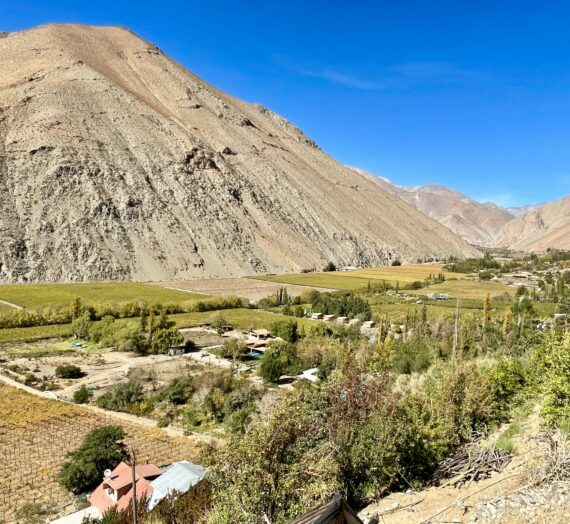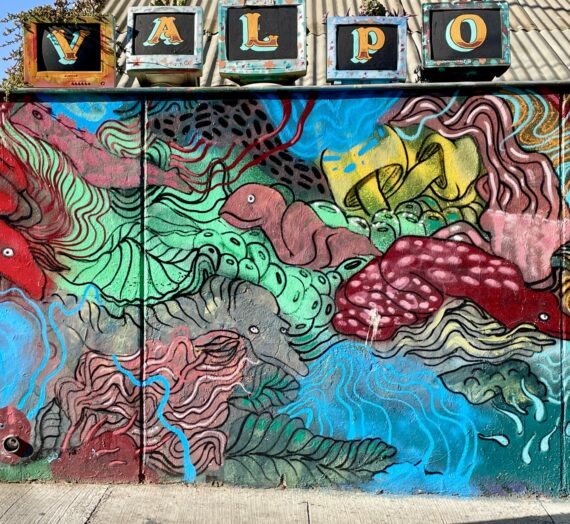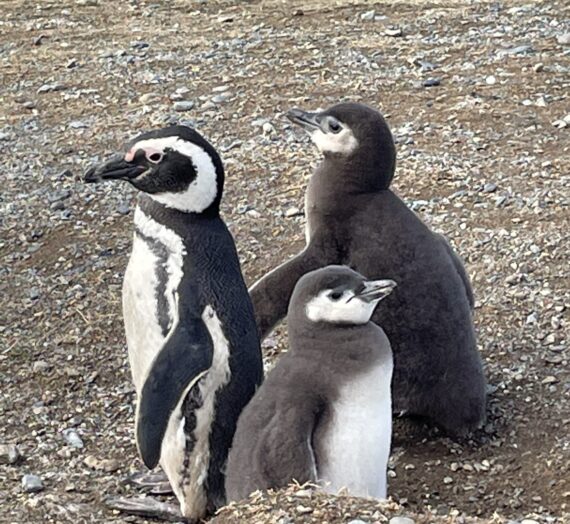Chile is a land of vast extremes. In the last months, I have traveled its deepest fjords, its highest mountains, most remote valleys, biggest cities and its widest beaches. But before leaving this great country, I had to visit the most extreme part of all- the Atacama Desert.
If your definition of desert is sand and sun with cactus or little plants huddling from the heat and cold, I’m about to blow your mind with the diversity I experienced over four days in the Atacama. It was incredible.

The Atacama Desert is an immense area of more than 50,000 square miles in northern Chile along the Argentinian and Bolivian borders. It is rich in minerals which have been exploited for eons. Copper, lithium, iron, silver, gold, saltpeter, sodium nitrate and boron feed the mining industry and about 62% of Chilean’s economy. Mining is king in this area. But beyond the geographic borders of this desert, lie a plethora of mountain ranges, valleys, salt salars, and freshwater lagoons that add to the environmental richness of this area. In order to see all the highlights, I signed up for three solid days of guided van tours. Thank goodness my friend Yetzabel came with me to help translate all that we were learning.










Salt and Sun are the prominent sights in the Atacama Desert, especially at the Tropic of Capricorn, 23 degrees latitude south
Atacama; the Human History
Atacama, as I learned, means “meeting place”. The early inhabitants traveled great distances throughout this area to the coast, over the mountains (into today’s Argentina) and up onto the Antiplano, or high-elevation plateau of today’s Bolivia. They traded their salt, minerals, and dried meat for other tools and necessities. Markings of their stories are seen today in various locations (probably their encampments) around the region.






Here we can see the vicuñas, which they hunted. In the next petroglyph, zorros (foxes) and serpents were depicted as dangers for their llamas.
Later, as people began to establish villages and farms along the river corridors, inhabitants transplanted trees to make an oasis for their homes, goats, llamas and sheep.






The modern-day streets of San Pedro de Atacama were established as an early oasis for nomadic people.












I visited the historic village of Machuca, where inhabitants have built their homes from rocks and clay and thatched their roofs with cactus and grasses from the region. They also served up a little llama on a stick for tourists like me!


“What?“
…Shhh! I didn’t say anything!
It is estimated that 33,000 camelids, like the llama, wander this area of northern Chile. The original animals were vicuñas (vih-coon-yas), and the much larger guanacos (gua-NAK-ohs). The Indigenous or “Originales” of the area bred these animals to create llamas and later alpacas, domesticating them for their wool and to transport goods on their journeys. Vicuñas and guanacos are both protected populations now and they are a common site everywhere across the steppe and grasslands.
But let’s get back to the history of this area. Eventually, this incredibly resource-rich region was claimed by Bolivia. In 1879, however, Chile flexed its muscles to fight the “War of the Pacific” against Bolivia (and their ally Peru). Chile won that war and took over all of Bolivia’s ocean-front land, as well as an immense section of the mineral-rich interior desert. Clearly, this is a reason why Chile is a more developed and wealthier country today.
Before heading north, I was told that the culture of northern Chile is very different than the rest of the country. When I arrived, I immediately noticed why. The people, their buildings, and their culture, reminded me a lot of Bolivia! I wonder what it’s like to have the region in which your family has lived for eons suddenly become a part of a different country?
Atacama Geology; the Rocks
One of the most visited parts of the Atacama Desert include the largest salt flat in Chile. Thousands of years ago, the continental plates pushed up the mountains along the coast entrapping ocean water in an an ancient lake. Eventually the water evaporated away, leaving a concentration of salts, layers of gypsum, clay and fossilized animals over 900 meters deep.


Annual precipitation here ranges on average from 0.8 mm to 20 mm per square meter. Because this high concentration of salt absorbs so much moisture, the Atacama Desert- and specifically the Valley de la Luna- is considered the driest place on Earth. I could literally feel my skin shriveling as I stood under the intense sun peering out across the moonscape.
















Historically salt was mined from certain areas of the Atacama salt flat, but generally, salt is not harvested anymore because it is naturally mixed with gypsum and sodium chloride. The process of extracting the pure salt would cost more than it’s worth. The Valle de la Luna (Moon Valley) was turned into a reserve and protected from further mining in 1989.
In other places in this desert, volcanos have historically exploded and covered the landscape with lava and ash while mountains were pushed up and sculpted by wind and water. All of this pressure and heat over time has revealed a rich variety of minerals displaying their colors in reds, greens and whites. The colors and shapes of the Valley Arcoiris, or Rainbow Valley, were fun to photograph!












Iron, lava, ash, and gypsum mixed together to make the primary colors of the rock in the Valley Arcoiris
Atacama Geology; the Water
Because the Atacama Desert spans an area between the coast and the inland Andes Mountains, the level of rainfall in each part varies dramatically. For example, the western foothills of the mountains receive much more rain as cloud systems dump their contents before lifting up and moving over the Andes to the east. This rainfall filters down the mountains into the flat, dry part of the desert in the form of underground aquifers. Then, some of this water springs to the surface in “ojos” or ponds. (An “ojo” is like the eye of the desert.) Because saltwater is more dense than fresh water, the salts sink to the bottom leaving the surface water relatively fresh, or in Spanish, “dulce”, meaning “sweet”. Therefore, these ponds are important for wildlife such as birds, waterfowl, foxes, and some rodents of the desert environment.










Relatively fresh water in Laguna Miscanti, Laguna Miñiques, the Ojos of the Salar and the Valley of the Rio Grande River
Many other lagoons in the Atacama are more concentrated with salt. In one tour, I was able to experience the buoyancy of Laguna Cejar. Although the water was a little cold, at 28% salinity, it was so effortless to sit up and float around.






To prepare us for our dip, the tour guide stressed emphatically that we should not get the salt water on our face. Guess who accidentally fell in with a big splash? You just can’t take me anywhere!
Throughout my tours, we visited many of these salty lagoons, a wonderful home for the Andean and Chilean Flamingos, who had migrated elsewhere for the season.












Scenes from Laguna Chaxa, Laguna Tebinquinche, Salar de Talar, and Las Piedras Rojas
Many of the areas I visited are under the governance of the Reserva Nacional Los Flamencos. Within the borders of this reserve, they are trying to protect these biologically unique areas. However, that hasn’t stopped mining from occuring along its borders.
Currently there is a large lithium mine at the south end of this salt flat which is draining the aquifers and precious water from several of the lagoons. Every one of our guides told us they were not supposed to speak politically, and they admitted to being part of the problem as they too had a cell phone in their pocket, but they pointed out where the edge of lagoon used to be just two years ago. The change of the water level is drastic. They also revealed that the community is becoming more and more divided as the mines provide money and jobs to the local people. Chile is considered to have 40% of the world’s lithium in this region and in order to harvest it, the mines have to suck the surface and ground water away. Climate change is not helping either; it is generally raining less which means that less water is seeping into the underground aquifers from the mountains. So, in reality, the Atacama is sinking, the salts and minerals are becoming more concentrated, and the future of this place is really uncertain.
Atacama Geology; the Geysers
The border of Chile, Bolivia and Argentina has one of the largest number of active volcanoes in the world. And nestled high amongst these mountains, El Tatio Geysers are considered one of the largest concentration of geysers in the world. For those of you that need a refresher, geysers intermittently discharge water and steam from deep within the earth. They form in places where there is a lot of magma (which is heating underground water) and pressure which forces the water up through natural tubes to the surface of the Earth. For our tour, we arrived at the geysers before dawn and shivered in the below-zero temperatures to see the show put on by the water and steam in the early morning light. It did not disappoint.














El Tatio Geysers, Chile
After sunrise, our tour group headed up to about 15,000 feet to have breakfast and enjoy the glories of the Antiplano.














The Atacama was so much more than I expected it to be… more vast, more diverse and more beautiful. I’m really glad I was able to see what I could.
This was where Yetzabel and I parted ways. With a heartfelt goodbye, she headed back to her life in Santiago, Chile, and I turned eastward. The 8-hour bus ride took me up and over the high mountain Jama Pass, through the beautiful light-filled Antiplano and down into Argentina again. I felt a little like I was going home.




Tom
Fantastic! That is one place I would love to visit.